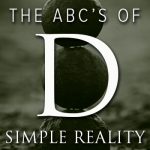No human activity expresses the truth and beauty found in the creative process more than dance. In India we find the art of dance communicates with extraordinary eloquence and elegance. Fritjof Capra describes the dance of the Hindu god Shiva which most of us have seen depicted in painting or sculpture.
“Picture Shiva’s dance as the god stands on the demon with his four arms floating in space with stunning grace. The upper right hand of the god holds a drum to symbolize the primal sound of creation; the upper left bears a tongue of flame, the element of destruction. The balance of the two hands represents the dynamic balance of creation and destruction in the world, accentuated further by the Dancer’s calm and detached face in the center of the two hands, in which the polarity of creation and destruction is dissolved and transcended. The second right hand is raised in the sign of ‘do not fear,’ symbolizing maintenance, protection and peace, while the remaining left hand points down to the uplifted foot which symbolizes release from the spell of maya [P-B]. The god is pictured as dancing on the body of a demon [the false-self], the symbol of human ignorance which has to be conquered before liberation can be attained.”[i]
[i] Capra, Fritjof. The Tao of Physics. New York: Bantam, 1975, p. 232.



